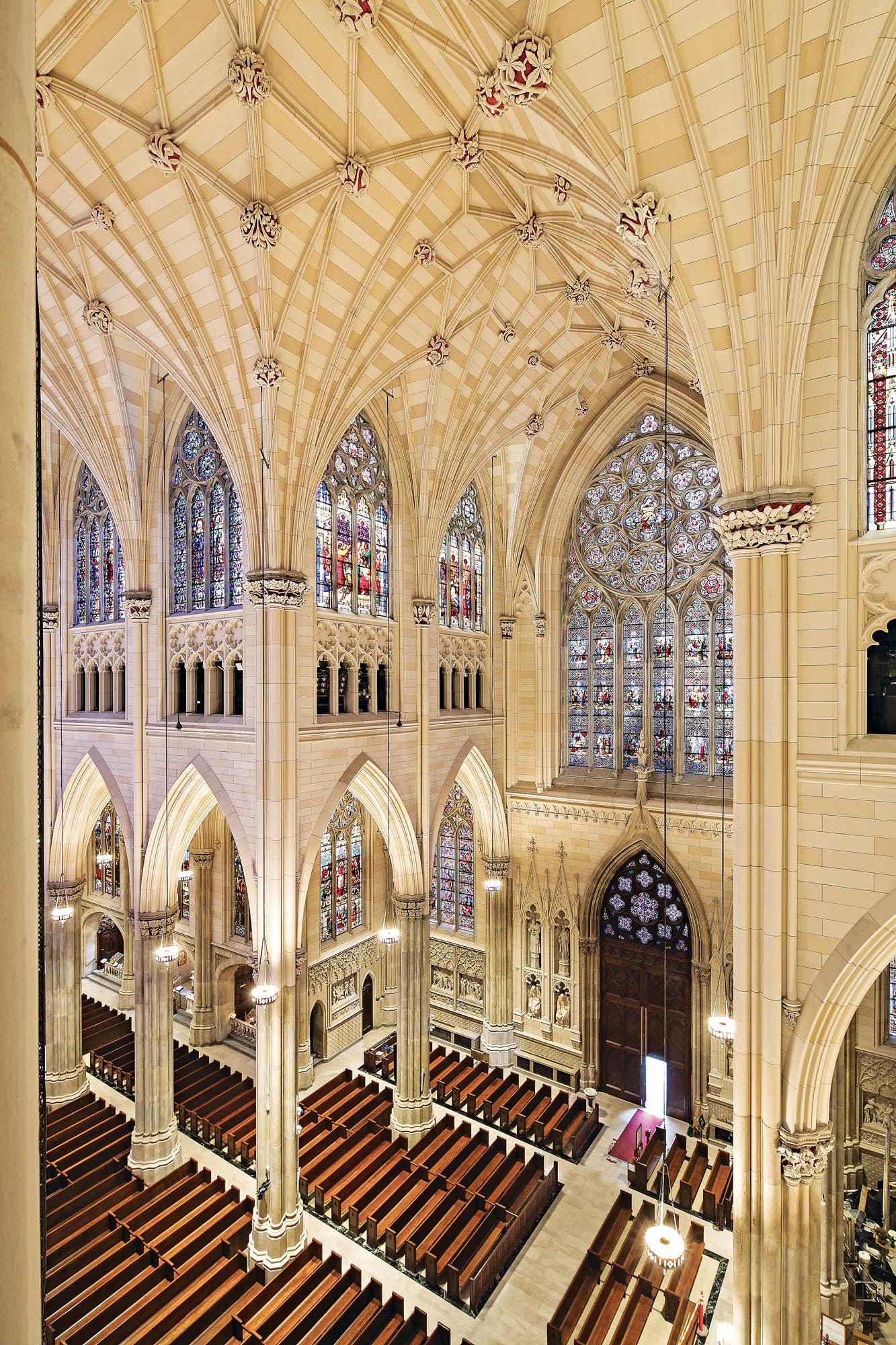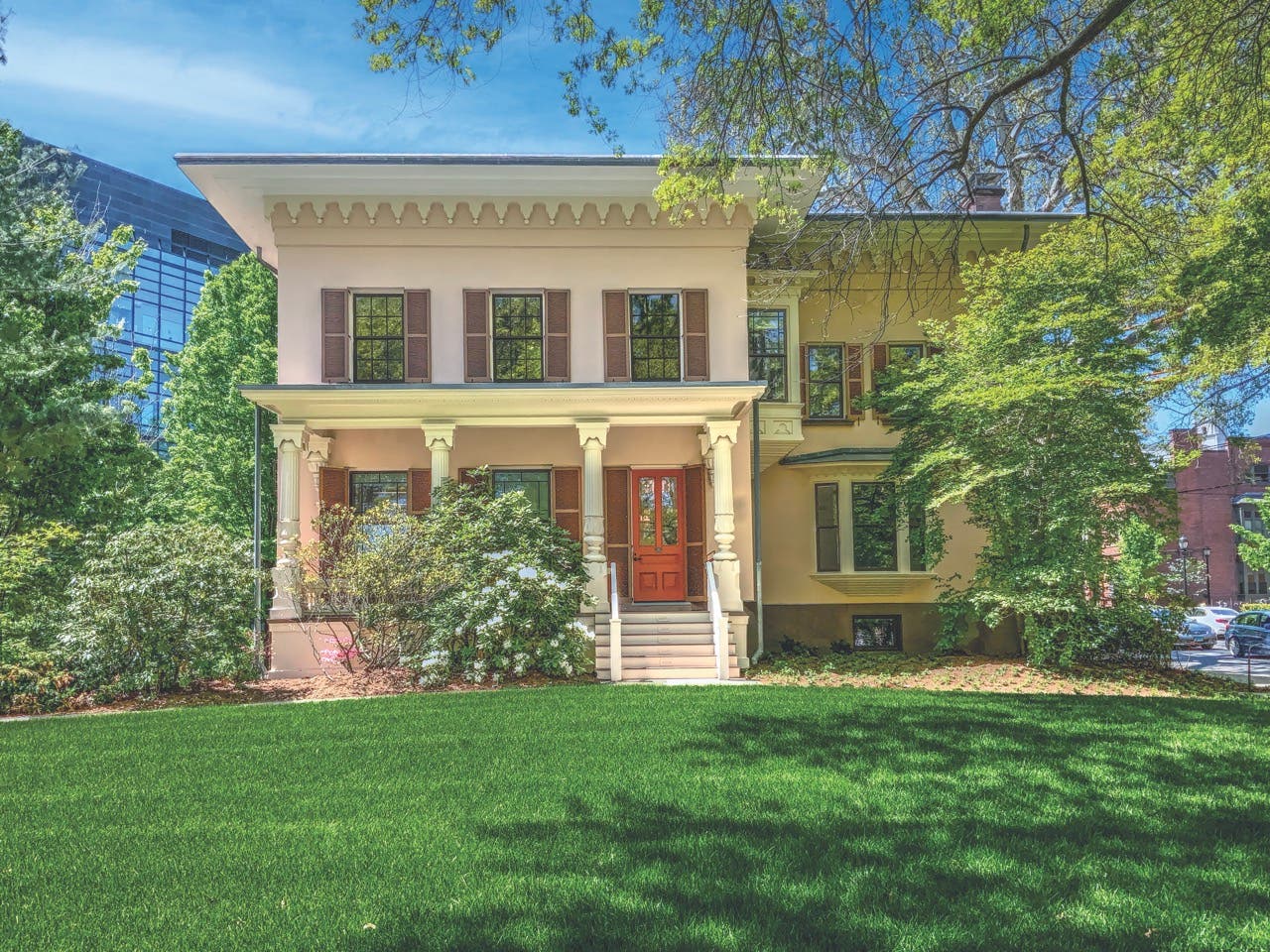
Windows & Doors
Restoring Historical Stained Glass
History
Egyptians likely were the first to produce colored glass, in the form of beads dating to 2,700 BC. Stained glass windows were found in Roman houses dating to the first century AD. The earliest documented pictorial stained glass is a head of Christ in the German Lorsch Abbey from 10th century AD. Stained glass was at its zenith in gothic architecture, but between the Renaissance and the mid-19th century, the change in religious sentiment associated with the Protestant revolution resulted in stained glass windows falling out of fashion.
In North America, glass was fabricated in Jamestown by 1607. Eventually stained-glass studios set up shop for both custom and stock designs. Churches frequently installed temporary glazing (plain or stenciled glass, but leaded) which served to complete the building enclosure until the parish had funds to install more intricate windows. While new stained-glass windows today may be of traditional or nontraditional design, they are fabricated in the same manner as historical windows.
Five types of stained glass are typically found in North America:
Traditional stained glass, which involves applying vitreous paint, stain, or enamel and firing it onto glass to depict scenes. (See Figure 1)
Stenciled glass, in which colored materials are applied repetitively with stencils across many panes. The glass is typically very thin and frequently with inconsistent firing, resulting in difficulties repairing it. (See Figure 2)
Cathedral glass, which is colored antique glass that is machine rolled and sometimes has a pattern pressed into it. (See Figure 3)
Opalescent glass, which includes milky-white glass mixed into it for translucency and is sometimes iridescent. (See Figure 4)
Plated glass—a North American stained glass—which sandwiches different glass together (opalescent, cathedral, and textured) in areas to achieve certain effects. John La Farge and Louis Comfort Tiffany both patented methods of plated glass achieved by sandwiching. (See Figure 5)
Installation
Stained glass is set in pieces into lead cames, which edge each piece. These are in turn soldered together, to form a reinforcing web that holds the glass in the designed pattern. Cement is applied to the cames to keep the joint watertight. The cames are attached to reinforcing rods with tie wires, which assist in keeping the lead stiff and support the weight of the glass. This assembly sits in a window frame of wood, steel, terracotta, or stone, and protects the interior from weather, lets in light, and, when operating portions are utilized, permits the passage of fresh air. (See Figure 6)
Assessment
Knowing the date of your window will help with its treatment and assessing its valuation. For tips and techniques of dating a window, see Preservation brief 33: The Preservation and Repair of Historic Stained and Leaded Glass.
Examine the window for the types of deterioration listed below. Annotate the deterioration on dimensioned drawings. Indicate the intended scope of repair along with quantities to ensure consistent bidding. If the scope includes removing the window for wholesale releading, require that tracings/rubbings be prepared prior to removal.
The types of conditions or deterioration that should be observed and noted are:
Sagging or bulging panels. This is usually caused by the weight of the glass lacking adequate support or being exposed to high heat. When examining this condition, observe if there are damaged, cracked or broken areas of glass, which will require repair as described below.
Broken or loose wire ties can be caused by aging or by the above-mentioned bulging. This may require the introduction of additional wires or perhaps additional reinforcing rods.
Examine the cames. If they have become stretched, the glass may be coming out of the cames, or there may be gaps at the panel edges showing daylight. Other symptoms may be a white powdery look (oxidation) on the lead cames or lead “fatigue,” evident as tears or cracks (particularly near the solder joints).
Rattling panels, or water or air infiltration, indicate a failure of the waterproofing, which also can have symptoms of stained or wet sills.
Check for loose or missing perimeter putty that holds the glass in the sash.
Look for loose or flaking painted areas of the glass (not to be mistaken for dirt). These unstable areas require restoration by a professional.
Repair
As with all historic preservation, first do no harm. Maintenance can be done by a layperson, but an experienced craftsperson is recommended for any of the listed repairs.
Maintenance
Have perimeter sealant of the window frame replaced every 10 to 15 years. This vital seal protects the joint from water exposure. Maintaining the paint film is also important to ensure that water doesn’t affect the substrate, preventing deterioration.
Maintain cement around the cames to ensure that water is kept out of the window’s crevices. If water sits anywhere, it will freeze and expand, causing more damage to the window.
Maintain hardware with lubricant and cleaning for proper operation and to prevent racking of the window frame.
Regular cleaning of the window should be done with appropriate cleaning solutions. Do not use any products containing ammonia, acid (including vinegar), solvents, or anything caustic or abrasive (like bathroom cleansers). Likewise, steam or pressurized air are too aggressive for stained glass and will result in damage to the glass or cames.
When to seek a professional repair person
When windows sag, a professional can determine where to install additional reinforcing bars or additional ties to support a window, without detracting from the original design. It is not possible to “flatten” large bulges since it puts the glass at risk of breakage. Not only has the lead stretched to cause the bulge or sag, but the assemblage has increased in size and likely won’t fit back into the frame. At this point, full releading is required. The window is traced and the lead cames measured to create a permanent record. The window is removed from the opening and taken to a shop where the individual pieces are removed from the cames and reassembled with new matching lead and reinforcing rods.
To repair cracked glass, epoxy glue can be applied to the edge of the glass. If a more flexible repair is needed to accommodate ongoing movement, a technique in which copper foil is folded over the edge of the glass and soldered can be used. In the case of badly damaged or missing glass, replacement glass can be sourced. When matching colored textured glass is not available, it is possible to use two layers of glass, one for texture and one for color, rather than installing a poorly matched piece that would be visible.
Where there is isolated separation of the cames, selective resoldering of separated joints is possible. If the glass is loose in the came, new cement can be worked into the joints to provide a weathertight joint. Sealant should not be used for this application.
In some cases, stained glass paint may be unstable or flaking. Stabilization of the paint should be restricted to professionals. There are many possible techniques included in the final link below.
What not to do
A common practice to protect stained glass from vandalism or weathering is to cover it with a plastic or glass storm window. This needs to be carefully considered. Done improperly, this can lead to premature failure of the lead cames due to overheating or rotting of the frames from condensation. Any cover design must be properly vented at the head and have drainage at the sill. Use calculations to determine if condensation could occur on the glass. The design must also reflect the mullion and muntin layout of the original window, or it will mar the appearance of the window.
Stained glass is a valuable and complicated asset. For the best long-term results, repairs should be made only after threats to the window (such as a leaky roof or crumbling masonry) are repaired.
Stained glass is typically an assemblage of colored glass pieces that form a pattern held together by lead strips called cames. Cames are reinforced by steel to support the weight of the glass. The term leaded glass indicates noncolored glass, which is similarly assembled. Stained glass has many roles in architecture: It is a decoration, it provides light to the room, and it keeps out rain and wind. As a result, its design is part science and part art, as is its conservation and restoration. While a layperson can perform minor maintenance to extend the life of stained glass, repairs should be undertaken by a professional.
Resources
Standards and Guidelines for the Preservation of Stained (and Leaded) Glass Windows, C. 2012 Stained Glass Association of America
With thanks to Emily Carson of Solstice Stained Glass for her technical input.
Susan D. Turner is a Canadian architect specializing in historic preservation of national registered buildings. She is the Senior Technical Architect for JLK, a woman-owned business specializing in the repair and preservation of historic buildings. She can be reached at sturner@jlkarch.com








